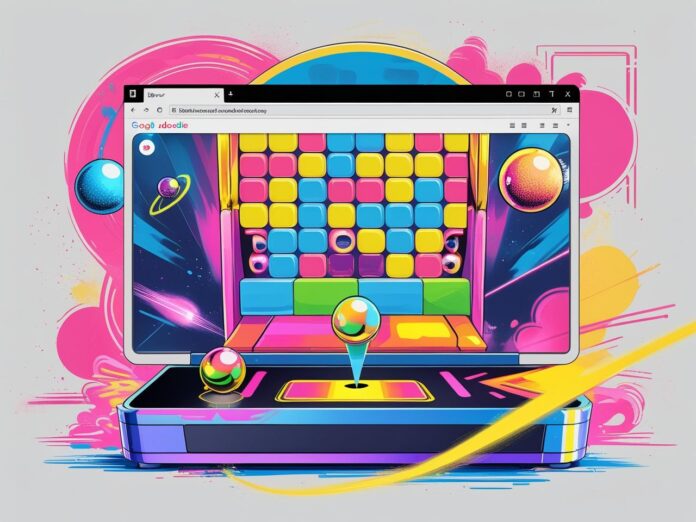Introduction: Understanding the Significance of Google Block Breaker
In the vast landscape of the internet, Google plays a central role in our digital lives. From searching information to managing emails, cloud storage, and more, Google services are integral to our daily routines. However, with this convenience comes the need for security and control over your online experience.
One term gaining attention among users is “Google Block Breaker.” While not an official Google product, it often refers to methods and tools used to bypass restrictions, blockades, or filtering mechanisms set within Google’s ecosystem. Whether you’re dealing with parental controls, organizational restrictions, or network-based blocks, understanding how Google Block Breaker works and how to navigate it is crucial.
In this detailed guide, we will explore what Google Block Breaker entails, how it affects your browsing, the common reasons for blocks, and legitimate ways to overcome restrictions without compromising security. This guide aims to empower users with knowledge to safeguard their browsing experience while adhering to ethical and legal standards.
What Is Google Block Breaker?
Defining the Term
Google Block Breaker is a colloquial term often used to describe techniques, tools, or methods used to bypass restrictions placed on Google services or content. These restrictions can be imposed by:
- Network administrators
- Internet Service Providers (ISPs)
- Government censorship
- Parental controls
- Organizational policies
The goal of a Google Block Breaker is to regain access to blocked content or services, ensuring uninterrupted browsing and usage.
Common Contexts Where Google Block Breaker Comes Up
- Accessing blocked websites or Google services in restrictive environments
- Bypassing regional censorship or geo-restrictions
- Overcoming organizational or school network filters
- Protecting privacy from surveillance or tracking
The Ethical and Legal Perspective
Before diving into the methods, it’s important to note that bypassing restrictions may violate organizational policies or regional laws. Always ensure that your actions are within legal bounds and respect the policies of your network or jurisdiction.
Why Do Google Blocks Happen?
Understanding why Google blocks occur helps in choosing the right approach to bypass them.
1. Network-Level Restrictions
Many organizations, schools, or public Wi-Fi networks implement restrictions to control access to certain sites or content, including Google services.
2. Government Censorship
Some countries enforce strict censorship laws, blocking access to specific websites or online content through government-controlled filters.
3. Parental Controls
Parents often restrict access to certain websites or content to protect children from inappropriate material.
4. Regional Content Restrictions
Certain content on Google or YouTube may be unavailable in specific regions due to licensing agreements or legal restrictions.
5. Security Concerns and Malicious Activity
In some cases, Google or network administrators block access to protect users from phishing, malware, or other security threats.
How Does Google Block Content?
Methods Used to Block Content
Google employs various techniques to restrict access, including:
- IP address blocking
- DNS filtering
- URL filtering
- Keyword filtering
- Deep packet inspection
These methods prevent users from reaching certain content or services in specific environments.
How to Identify if You’re Facing a Google Block
Symptoms of a Block
- Error messages such as “Access Denied,” “This page is not available,” or “Content not found.”
- Inability to access specific Google services like Gmail, YouTube, or Search.
- Redirects to a warning or block page.
- Slow or failed connections.
Diagnosing the Issue
- Try accessing the content from a different network or device.
- Use online tools to check if the site is blocked in your region.
- Contact your network administrator or ISP for clarification.
Methods to Bypass Google Blocks (Google Block Breaker Techniques)
Here, we explore legitimate and effective techniques to bypass restrictions, ensuring you can access Google services freely.
1. Use a Virtual Private Network (VPN)
How It Works:
A VPN creates a secure connection to a remote server, masking your IP address and encrypting your internet traffic. This makes it appear as if you’re browsing from a different location or country.
Benefits:
- Bypasses regional restrictions
- Protects privacy and data
- Accessible from any device
Tips:
- Choose reputable VPN providers
- Ensure the VPN has fast servers in regions where access is unblocked
- Use VPNs that do not keep logs for privacy
2. Use Proxy Servers
How It Works:
Proxy servers act as intermediaries between your device and the internet. They fetch content on your behalf and relay it back to you.
Benefits:
- Simple to set up
- Can unblock content quickly
Limitations:
- Less secure than VPNs
- May be slower or unreliable
3. Switch to HTTPS or Use Secure Browsers
Some restrictions are based on URL filtering. Accessing Google services via HTTPS (secure connection) or using browsers with built-in security features can sometimes bypass basic blocks.
4. Change DNS Settings
How It Works:
Switching to a public DNS provider like Google DNS (8.8.8.8 and 8.8.4.4) or Cloudflare (1.1.1.1) can help bypass DNS filtering.
How to Do:
- Access your network settings
- Replace your current DNS with public DNS addresses
5. Use Tor Browser
How It Works:
The Tor network anonymizes your internet traffic by routing it through multiple relays, making it difficult to trace your location.
Benefits:
- High level of anonymity
- Bypasses censorship effectively
Drawbacks:
- Can be slower
- Not suitable for streaming or high-bandwidth activities
6. Use Mobile Data or Hotspots
If your Wi-Fi network blocks access, switching to mobile data may provide unrestricted access.
7. Adjust Browser Settings and Use Incognito Mode
Some restrictions are browser-specific. Clearing cookies, cache, or using incognito modes can sometimes bypass simple blocks.
Best Practices for Safe and Ethical Use of Google Block Breaker Techniques
While bypassing restrictions can be necessary, it’s important to do so responsibly:
- Respect policies: Follow organizational and local laws.
- Use reputable tools: Choose trusted VPNs and proxies to avoid malware and data leaks.
- Keep software updated: Regularly update your browsers and security software.
- Avoid illegal activities: Do not use bypass methods for malicious purposes.
Troubleshooting Common Issues with Google Block Breaker Method
VPN Not Connecting or Slow
- Switch to a different server
- Restart your device
- Check for VPN updates
- Contact VPN support
Proxy or DNS Not Working
- Clear browser cache
- Restart your router
- Verify DNS settings
- Try alternative proxies
Tor Browser Issues
- Disable firewall or antivirus
- Use bridges if Tor is blocked
- Update to the latest version
Additional Tips for Enhancing Your Online Privacy and Securit
- Use strong, unique passwords for your accounts.
- Enable two-factor authentication where available.
- Regularly review your privacy settings.
- Be cautious with free VPNs and proxies—they may compromise your data.
- Stay informed about local laws regarding internet usage.
Future of Google Content Accessibility
As internet censorship evolves, so do the tools and techniques for bypassing restrictions. Staying updated with the latest security tools and understanding regional laws is essential for safe navigation.
Conclusion: Navigating the Challenges of Google Blocks with Confidence
The term “Google Block Breaker” encompasses a variety of methods to regain access to restricted content and ensure seamless browsing experiences. Whether you’re dealing with organizational restrictions, regional censorship, or network filters, understanding and responsibly utilizing these techniques can significantly enhance your online freedom.
Always prioritize safety and legality when employing bypass methods. Using reputable VPNs, proxies, and secure browsers can help you maintain privacy while accessing vital information and services.
Remember, knowledge is power. Being informed about how to navigate restrictions empowers you to take control of your digital experience, making your online journey more open, secure, and enjoyable.

